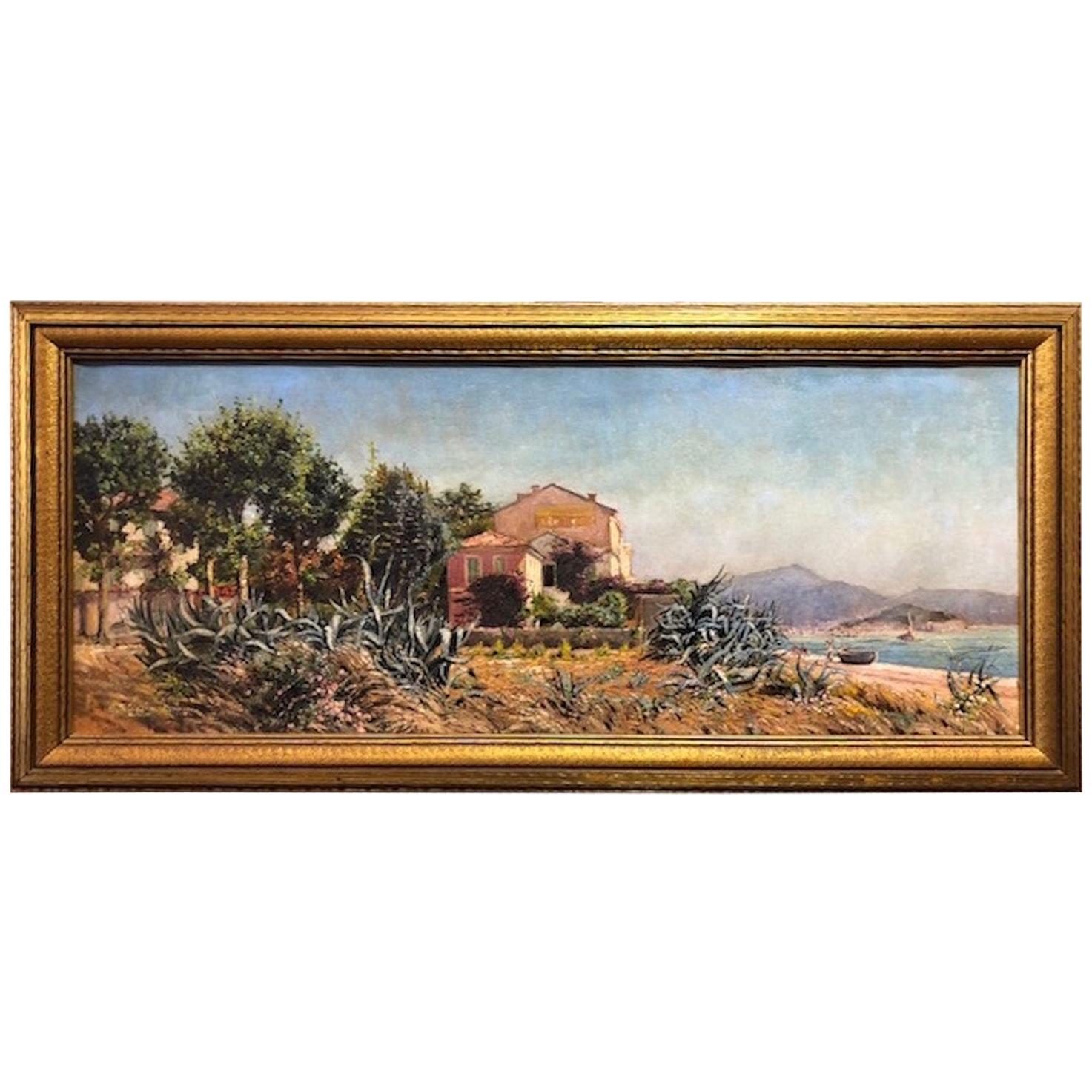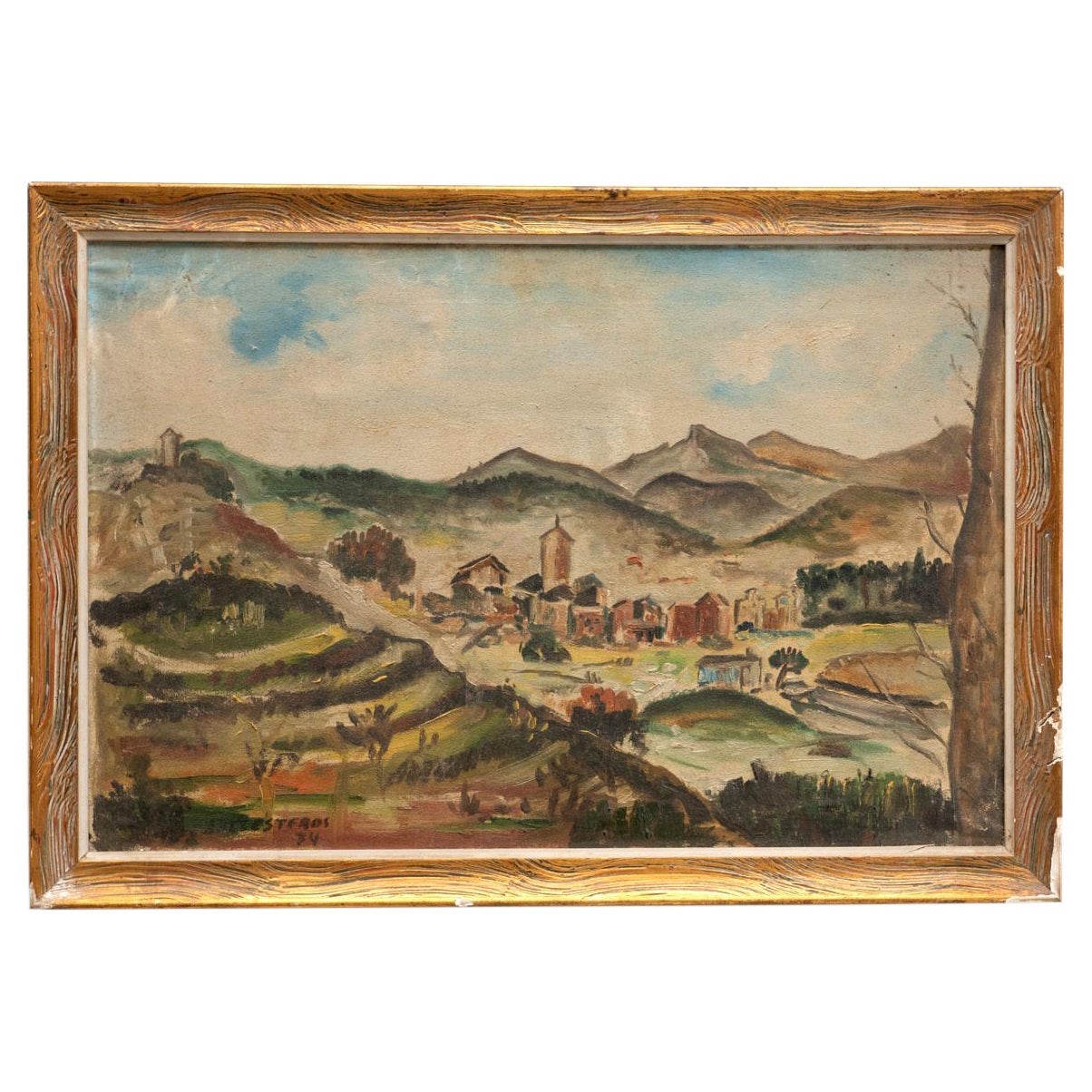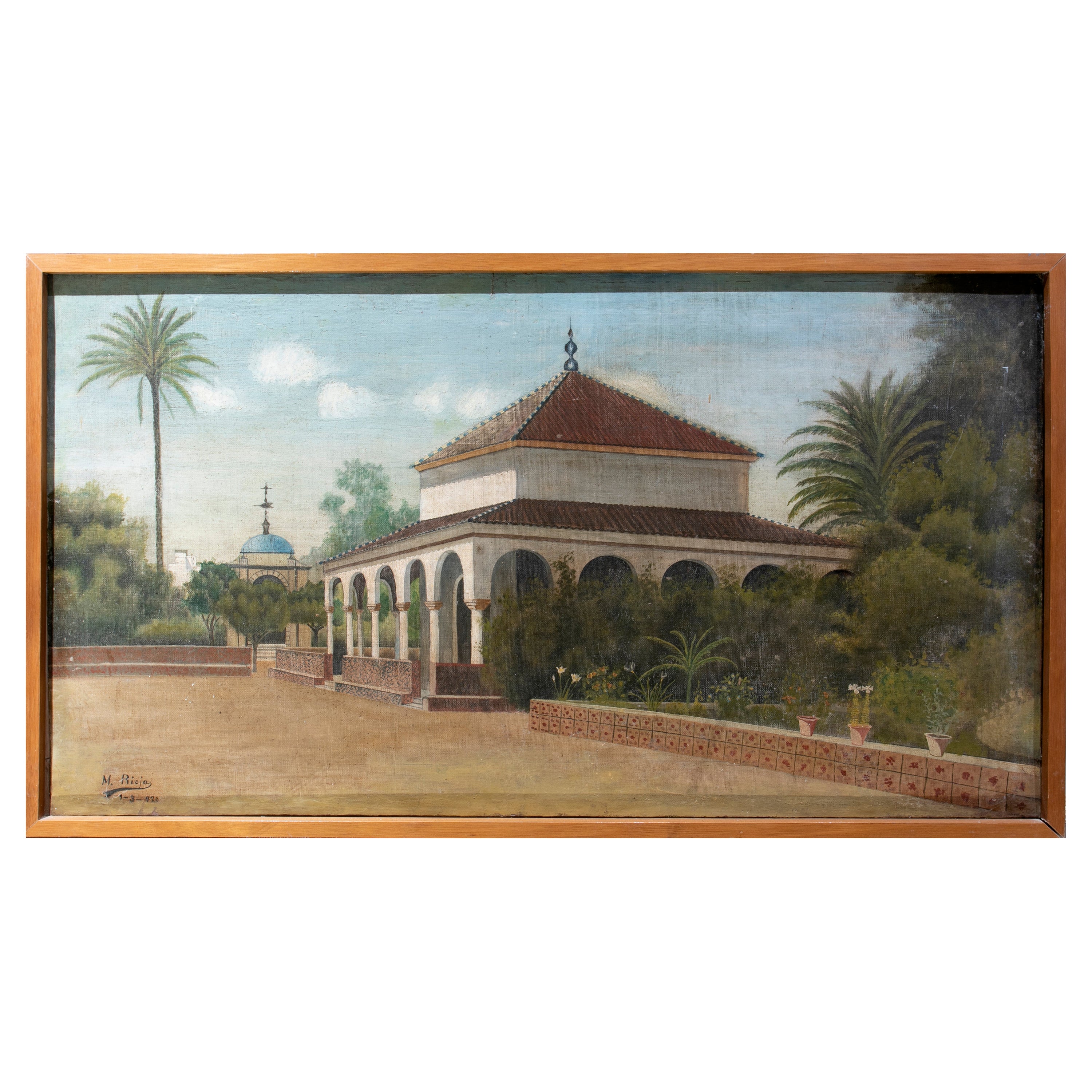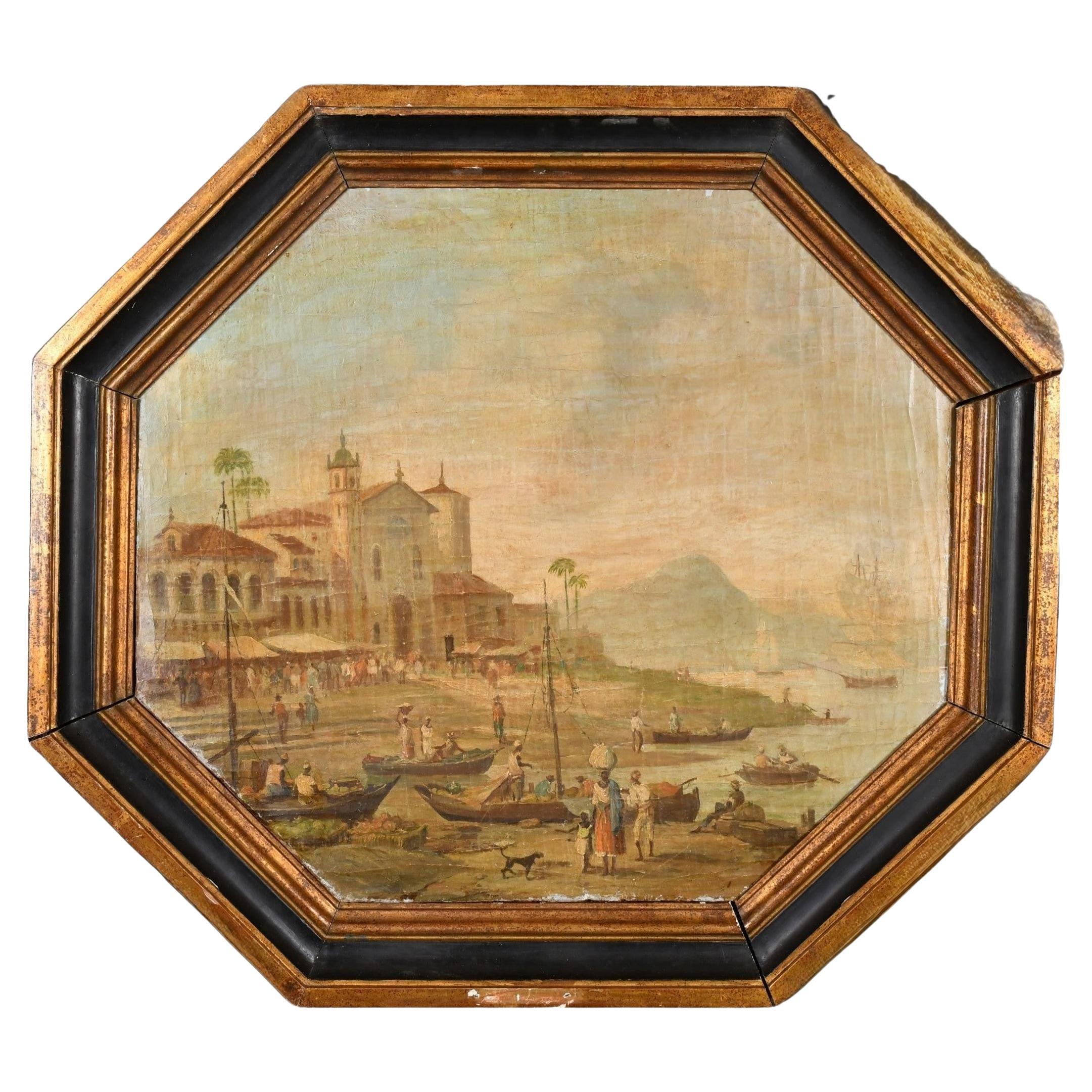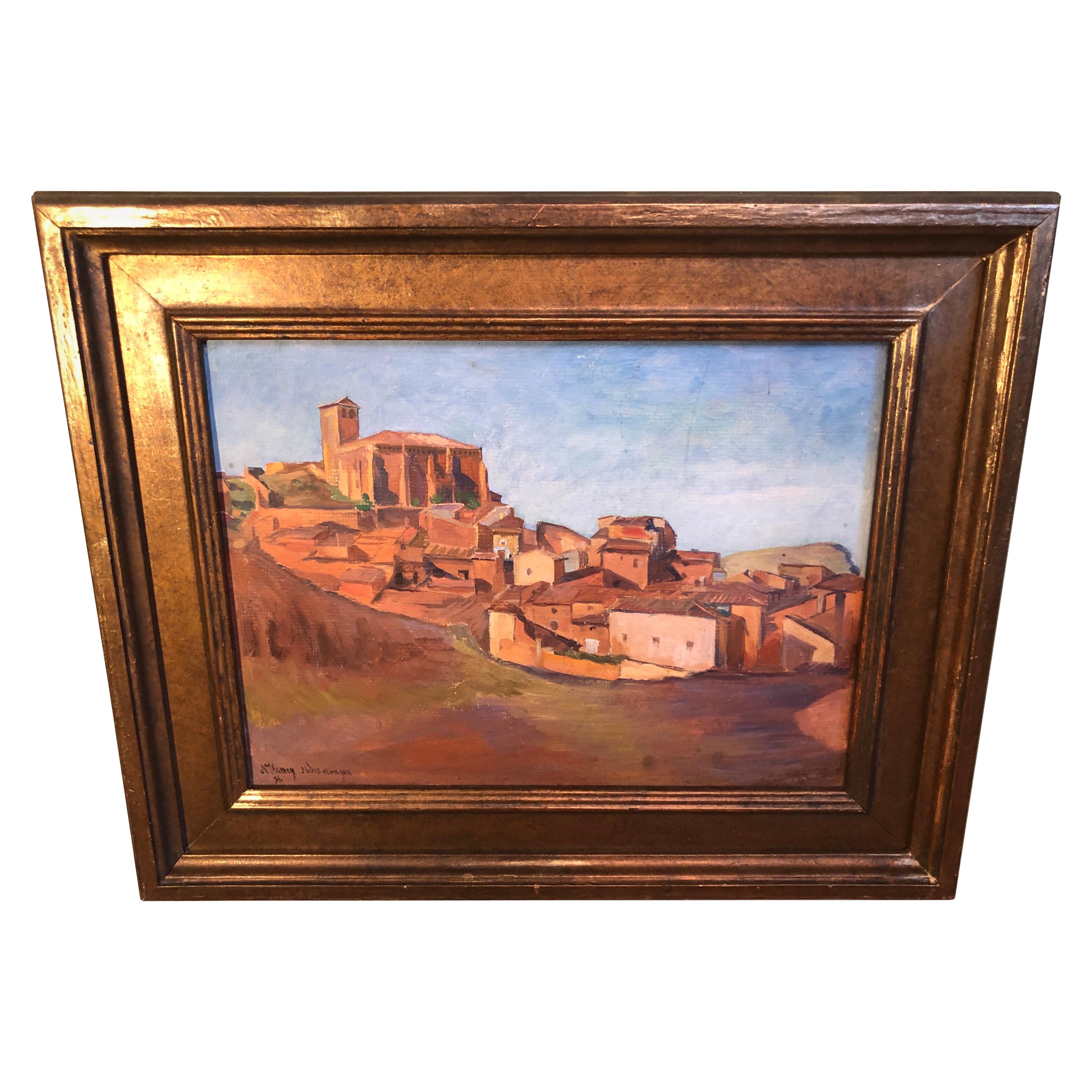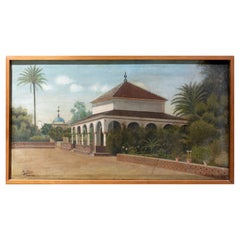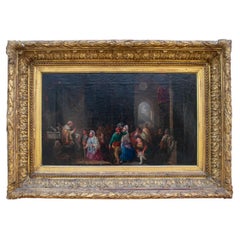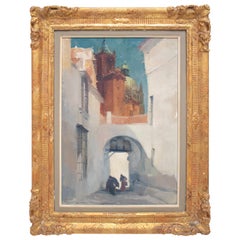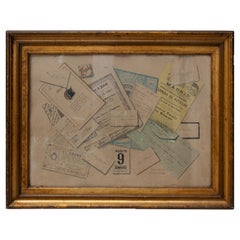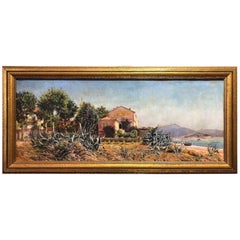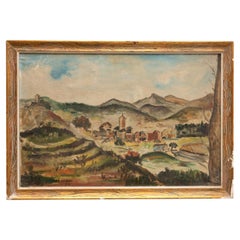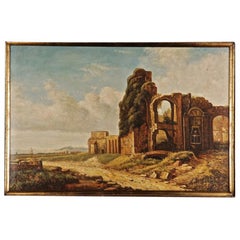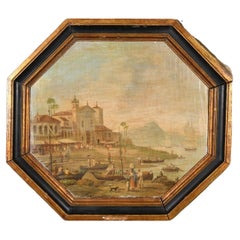Items Similar to Decorative Oil on Canvas Painting of the City of Marbella
Want more images or videos?
Request additional images or videos from the seller
1 of 19
Decorative Oil on Canvas Painting of the City of Marbella
$1,417.74
£1,062.69
€1,200
CA$1,947.74
A$2,174.47
CHF 1,139.39
MX$26,617.60
NOK 14,470.23
SEK 13,643.59
DKK 9,134.84
Shipping
Retrieving quote...The 1stDibs Promise:
Authenticity Guarantee,
Money-Back Guarantee,
24-Hour Cancellation
About the Item
Decorative Oil on Canvas Painting of the City of Marbella
Measurements with frame: 56x73x3cm
About the Seller
5.0
Platinum Seller
Premium sellers with a 4.7+ rating and 24-hour response times
Established in 1996
1stDibs seller since 2017
702 sales on 1stDibs
Typical response time: <1 hour
- ShippingRetrieving quote...Shipping from: Marbella, Spain
- Return Policy
Authenticity Guarantee
In the unlikely event there’s an issue with an item’s authenticity, contact us within 1 year for a full refund. DetailsMoney-Back Guarantee
If your item is not as described, is damaged in transit, or does not arrive, contact us within 7 days for a full refund. Details24-Hour Cancellation
You have a 24-hour grace period in which to reconsider your purchase, with no questions asked.Vetted Professional Sellers
Our world-class sellers must adhere to strict standards for service and quality, maintaining the integrity of our listings.Price-Match Guarantee
If you find that a seller listed the same item for a lower price elsewhere, we’ll match it.Trusted Global Delivery
Our best-in-class carrier network provides specialized shipping options worldwide, including custom delivery.More From This Seller
View All1920s Framed Painting of Spanish Architecture, Granada, Signed M. Rioja
Located in Marbella, ES
1920s Framed painting of Spanish Architecture, Granada, Signed M. Rioja.
Category
Early 20th Century Spanish Paintings
Materials
Canvas, Wood
19th Century Oil on Canvas Painting Attributed to Eugenio Lucas Villamamil
Located in Marbella, ES
Antique 19th century oil on canvas people painting attributed to Eugenio Lucas Villamamil, with acanthus and foliate gilt wood and gesso frame
Dimensi...
Category
Antique 19th Century Spanish Paintings
Materials
Canvas
Charles Swyncop Oil on Canvas Painting of an Andalusian Town
Located in Marbella, ES
Charles Swyncop oil on canvas painting of an Andalusian Town.
An early 20th century Belgian artist, pupil to Alfred Bastien, who regularly visited Sp...
Category
Mid-20th Century Belgian Paintings
Materials
Canvas
Spanish Framed Hand-Painted Painting Known as "Mesa Revuelta"
Located in Marbella, ES
Spanish framed hand-painted painting known as "Mesa Revuelta"
Measurements with frame: 65 x 82 x 3cm.
Category
Vintage 1910s Spanish Paintings
Materials
Paper
19th Century Spanish Orientalist Framed Oil on Canvas Painting
Located in Marbella, ES
19th Century Spanish Orientalist Framed Oil on Canvas Painting
Measurements with frame: 61.5x72.5x4cm.
Category
Antique Mid-19th Century Spanish Paintings
Materials
Canvas, Wood
Spanish Painting in Oil on Canvas of Andalusian Characters
Located in Marbella, ES
Spanish Painting in Oil on Canvas of Andalusian characters
Measurements with frame: 80x100x6cm.
Category
Late 20th Century European Paintings
Materials
Canvas
You May Also Like
Painting Attributed to Jose Arpa
By Jose Arpa
Located in Houston, TX
Jose Arpa (1858-1952), known as “The Colorist Painter” of figures and landscapes was born in Carmona, Spain. His works demonstrate the brilliant legacy of a Spanish painter who loved...
Category
Antique Early 1900s Spanish Other Paintings
Painting by Ballesteros, Oil on Canvas, 1974
Located in Barcelona, ES
Painting by Ballesteros, 1974.
Oil on canvas.
Handsigned and dated.
In original condition, with some visible signs of previous use and age, preserving a beautiful patina....
Category
Vintage 1970s Spanish Mid-Century Modern Paintings
Materials
Canvas
20th Century Oil Painting, Before the Fonatana the Porta Fulba
Located in Berlin, DE
Motiv: Before the Fontana the Porta Fulba, 1839
Extensively composed and stylistically finely worked out, impressionistic landscape with broad brushstroke, which through the differe...
Category
20th Century Paintings
Materials
Canvas
Early 19th century Capriccio Brazil School Painting
Located in Seaford, GB
Rare Early 19th century Capriccio view of Rio de Janeiro Painting
Probably painted circa 1810 by one of Jean-Baptiste Debret, Italian Students.
Painted on Sailcloth.
Historical Context of Early 19th Century Portuguese Colonial Brazil
1.1 Transition from Colony to Empire
During the early 19th century, Brazil underwent a seismic shift in its political status. Originally a colony under the Portuguese Empire, the arrival of the Portuguese Royal Court in Rio de Janeiro in 1808 rapidly elevated the city’s cultural and political importance. By 1815, Brazil was declared a kingdom united with Portugal, setting the stage for the emergence of the Empire of Brazil in 1822. This period of transformation—often termed the transitional period from colony to empire—fueled a wave of artistic production in cities like Rio de Janeiro.
1.2 European Artistic Influence in Brazil
With the French Artistic Mission in Rio (initiated in 1816) and the presence of various Portuguese and European artists, Brazilian art of the early 1800s began to reflect diverse influences, from neoclassical painting to the early rumblings of romanticism. Painters such as Jean-Baptiste Debret, and Nicolas-Antoine Taunay, and local luminaries like Manuel de Araújo Porto-Alegre contributed to the fine arts tradition in Brazil. Their works featured scenes of local life, portraits of Brazilian society, and imaginative vistas—sometimes referred to as “capriccios,” in which real elements were combined with artistic liberties to create an idealized panorama.
1.3 Rio de Janeiro as Cultural and Political Hub
Rio de Janeiro, often called the Imperial capital after Brazil’s independence, was home to foundational institutions like the Imperial Academy of Fine Arts (Academia Imperial de Belas Artes). Later evolving into the Escola de Belas Artes (School of Fine Arts in Rio), these academies nurtured the talents of emerging painters, who found patronage under the Royal Court and, subsequently, the Imperial Court. The city’s significance was further enhanced by the construction of significant buildings, the modernization of infrastructure, and the mingling of European courtly customs with the traditions of local inhabitants.
. Description of the Octagonal Oil on Canvas: A Capriccio View of Rio de Janeiro
2.1 Composition and Layout
The most striking characteristic of this 19th-century Brazilian art piece is its octagonal shape, a relatively unusual format that draws the viewer’s gaze toward its centre. The composition showcases Rio de Janeiro’s shoreline in the early 1800s, brimming with merchant ships and smaller boats anchored near the shore. On the sand, there is a bustling crowd of local people—men and women carrying food and goods on their heads, loading and unloading boats, and engaging in everyday commerce. The backdrop of soaring mountains suggests Rio’s iconic topography, embodying the landscape that famously defines the city.
2.2 Architectural and Religious Landmarks
On the left side, one can discern the silhouette of a church believed to be Santa Lucia, a significant religious structure in the heart of early 19th-century Rio. This element provides viewers with a tangible reference point, linking the scene to an actual location. However, because this painting is labelled as a “capriccio,” the artist might have taken creative liberties by rearranging or amplifying certain features of the city. The melding of real and idealized elements is characteristic of these imaginative vistas.
2.3 Evoking Daily Life in Colonial Rio
One of the painting’s greatest appeals lies in its portrayal of daily life during the colonial era. Men and women from various backgrounds populate the scene. Some appear to be carrying goods on their heads, a common practice in Brazil that has persisted through different centuries. Others appear to be haggling or trading near small vessels, revealing the commercial pulse of an active port city. This focus on local people, combined with the grandeur of merchant ships, captures the tension and synergy between the every day and the extraordinary—a hallmark of Brazilian colonial painting that balances the grand narratives of empire with the rhythms of ordinary life.
2.4 An Amalgamation of Neoclassical and Romantic Influences
Although academic art in early 19th century Brazil was highly influenced by neoclassicism, the onset of romanticism can be spotted in the emotional portrayal of the sky, the lively palette, and the dramatic emphasis on nature’s beauty (the mountains, in particular). This duality reflects the fine arts tradition in Brazil during the transitional phase when artists were embracing multiple styles. As part of the School of Rio or the Rio de Janeiro school, painters often integrated academic techniques learned from European masters with emerging local subjects and influences.
3. Institutions and Artistic Movements
3.1 Imperial Academy of Fine Arts
Originally known as the Royal School of Sciences, Arts, and Crafts, the Imperial Academy of Fine Arts in Rio de Janeiro was instrumental in shaping 19th-century Brazilian art. Influential artists and teachers from Portugal, France, and other European nations congregated at the Academy, imparting their expertise to native students. As the monarchy consolidated power, the Academy enjoyed royal patronage, leading to the creation of Imperial Academy-style works that combined European academic rigour with Brazilian-themed subject matter.
3.2 Impact of the French Artistic Mission
The French Artistic Mission, which arrived in 1816, played a pivotal role in introducing advanced European artistic techniques, thereby elevating the overall quality of painting in Brazil. Artists like Jean-Baptiste Debret not only documented Brazilian society but also spearheaded the development of a local visual identity that aligned with both academicism and the national context of a blossoming empire. Debret, alongside others such as Nicolas-Antoine Taunay, mentored Brazilian artists, sowing the seeds of what would become the Brazilian academic art movement.
3.3 Religious, Historical, and Landscape Paintings
In addition to everyday scenes and historical compositions, religious iconography remained crucial throughout Portuguese colonial and imperial Brazil. Churches were omnipresent in cityscapes like Rio de Janeiro. Many colonial-era Brazilian portraits...
Category
Antique Early 19th Century Brazilian Spanish Colonial Paintings
Materials
Canvas
$2,939 Sale Price
20% Off
Signed painting on Board of the Aragon Region in Spain , 1931
Located in Redding, CT
Signed Southwestern painting of the Aragon Region in Spain.
Dated 1931. Oil on board, gilt solid wooden antique frame.
Category
Vintage 1930s American American Classical Paintings
Materials
Wood, Masonite, Paint
$1,045 Sale Price
62% Off
19th Century Original Oil Painting, Italian Landscape
Located in Scottsdale, AZ
19th Century Original Oil Painting, Italian Landscape. Oil on board. Unknown artist.
Category
Antique Mid-19th Century Paintings
Materials
Paint
$2,320 Sale Price
20% Off
